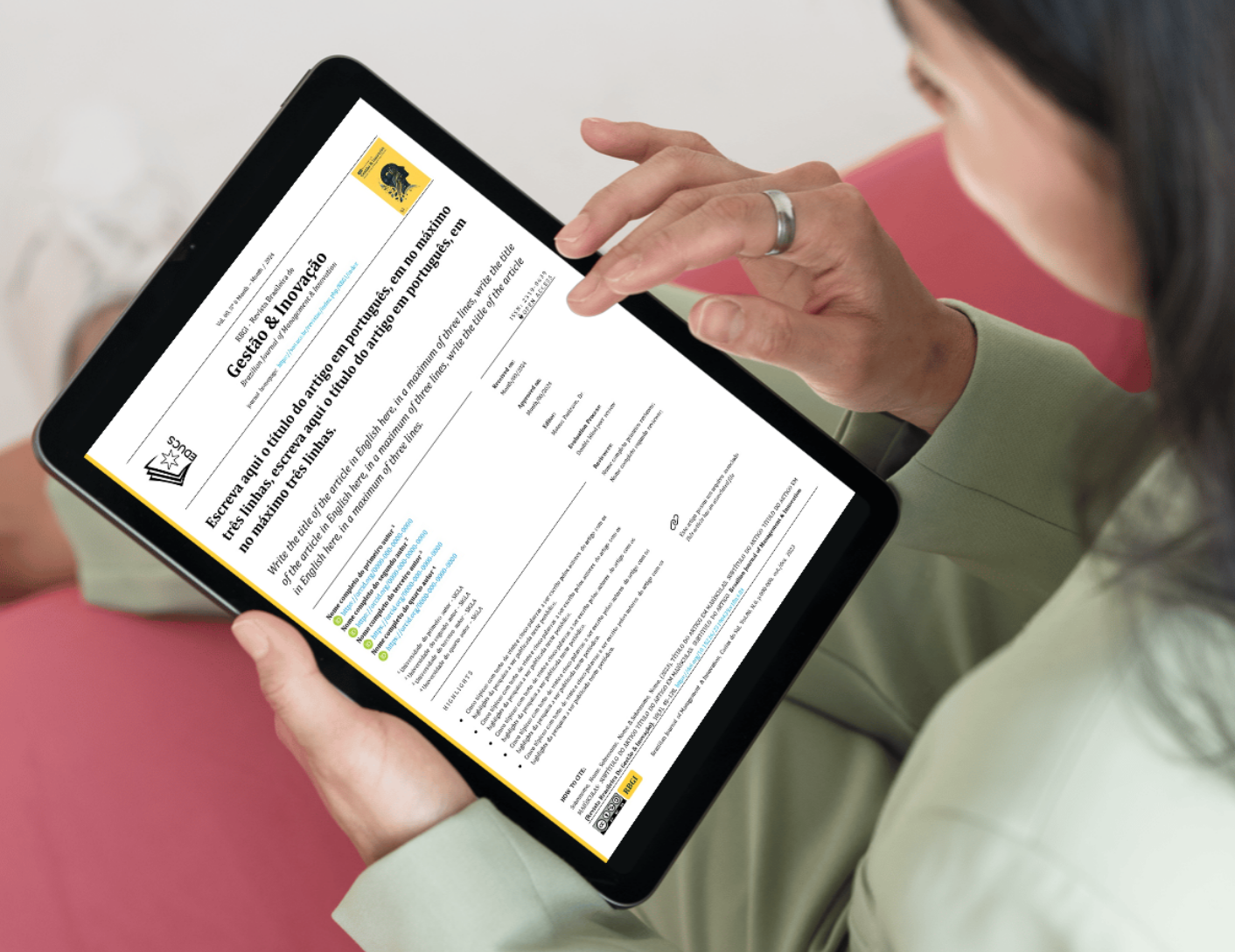RBGI New Graphical Design (2024)
With the migration to the new OJS platform, we are introducing the new visual identity of RBGI, both cover and article layout, designed by Associate Editor Bianca Libardi.
While RBGI commitment to open science and scientific excellence remains steadfast, we now offer a modern and innovative design that enhances readability and user experience, improving quality for authors and readers. New cover reflects the intersection of RBGI, grounded on Innovation Management, with the fields of Sustainability, Futures, Technology, Human-Centricity, Knowledge-Based Development, embracing the context of Brazilian biodiversity. This integration is required to open a more systemic perspective to adress complex challenges, and the role of both innovation and management fields.
Along with the new design, we have implemented improvements that will enrich the experience for both for the scientific and managerial community.
What has Changed?1. New Visual Identity: The journal has been redesigned to offer a cleaner, more modern, and visually appealing layout. This new visual identity aims to facilitates navigation and reading, providing a more engaging experience with selected typography.

2. Article Highlights: Each article now includes highlights that summarize the most important and innovative aspects of the research, allowing for a quick and effective understanding of the content for both Academics, Managers and Policy-Makers;

3. Links to Related Content: We have integrated links that direct readers to related content, references, and supplementary materials, enhancing the comprehension and context of the studies presented. Authors will be able now to enrich article experience with new objects such as links to videos;
4. Structured Abstracts: The abstracts of the articles have been reformatted into a structured style, making it easier to identify the objectives, methods, results, and conclusions of each study.
- Objective: This section should provide a detailed description of the primary objective of the study. It should clearly articulate why the study was conducted, outlining the specific goals and purposes of the research. Additionally, it should set the context for the study by briefly mentioning the broader research question or problem being addressed.
- Design/Method/Approach: This section should offer a comprehensive explanation of the research design, methods, and approaches employed in the study. It should include detailed descriptions of the type of research (qualitative, quantitative, or mixed methods), the specific techniques used for data collection (such as surveys, interviews, or experiments), the analytical tools and procedures implemented, and any experimental protocols followed.
- Originality/Relevance: This section should emphasize the originality and relevance of the research. It should explain what makes the study unique compared to previous work in the field and highlight the innovative aspects of the research. Additionally, it should discuss the significance of the study's findings and how they contribute to the advancement of knowledge in the specific field of study.
- Main Results/Findings: This section should present the main results or findings of the study in a clear and detailed manner. It should provide a thorough overview of the most significant findings, including any statistical results or patterns observed. This section should also explain how these findings address the research objectives and contribute to the understanding of the research problem.
- Theoretical/Methodological Contributions/Implications: This section should discuss the theoretical and methodological contributions of the study in detail. It should explain how the research advances existing knowledge by introducing new theories, refining existing ones, or improving previous methodologies. Additionally, it should discuss the broader implications of the findings for future research and practice.
- Social/Managerial Contributions: This section should address the social and managerial contributions of the study. It should explain how the research results can be practically
5. Author Contribution Table: We have included a table detailing the contributions of each author in every article CRediT (Contribution Roles Taxonomy), outlining their responsibilities and roles, ensuring transparency and appropriate recognition.

These changes have been carefully planned to improve the usability and quality of our journal while maintaining our commitment to the dissemination of high-quality scientific knowledge.
We hope everyone enjoys these updates,
RBGI Editorial Team






